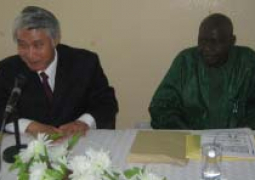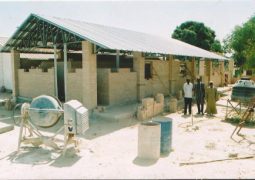It has again been reported that West Africa is at risk of experiencing another round of meningitis outbreak, which has already touched such countries as Nigeria, Niger, Burkina Faso and Mali.
Meningitis is an infection that affects the delicate membranes that cover the brain and spinal cord.
There are various types such as bacterial meningitis, which “can be deadly and contagious among people in close contact”; viral meningitis, which “tends to be less severe and most people recover completely without specific therapy”, and fungal meningitis, known to be “a rare form of meningitis and generally occurs only in people with weakened immune systems”.
According to the World Health Organisation (WHO), meningococcal meningitis is a bacterial form of meningitis, with a serious infection of the thin lining that surrounds the brain and spinal cord, hence can cause severe brain damage and “is fatal in 50 per cent of cases if untreated”.
“Meningitis tends to hit Africa in cycles. Cases of meningitis C have been rising since 2013, first in Nigeria in 2013 and 2014, and then in Niger in 2015,” said WHO’s Coordinator for Control of Epidemic Diseases Unit Dr William Perea.
He added: “We have to be ready for a much larger number of cases during the 2016 meningitis season.”
Going by the WHO’s message of alert, it is advisable that we in The Gambia take note of this situation to be on guard individually and nationally, as news of the epidemic is reported around neighbouring countries.
According to health research conducted by the Meningitis Vaccine Project, the disease is most prevalent in the sub-Saharan meningitis belt, an area that stretches from Senegal and the Gambia in the West to Ethiopia in the East and has an at-risk population of about 430 million.
Furthermore, the disease is said to be causing inflammation of the lining of the brain and spinal cord. An airborne bacterial form, meningococcal meningitis is easily spread through droplets of respiratory or throat secretions, especially sneezing and coughing.
Anyone can develop just about any kind of meningitis. But research has shown that some age groups have higher rates of meningitis than others. They are children under age 5, teenagers and young adults age 16-25, and adults over age 55.
According to the WHO, symptoms include stiff neck, high fever, headaches, vomiting and sometimes seizures. Even when the disease is diagnosed early and adequate therapy instituted, 5% to 10% of patients die, typically within 24-48 hours of onset of symptoms. Epidemic strains A, C and W135 are now the main serogroups observed in Africa.
Outbreaks occur every year between December and May. The dry season, with strong dusty winds and cold nights make people more prone to respiratory infections and facilitates the spread of bacteria.
The largest recorded outbreak of epidemic meningitis was recorded in Africa in 1996, with over 250,000 cases and 25,000 deaths registered.
“:It’s is rare but it can be fatal … so you need to be very attuned to what the additional signs of meningitis are.”
Colin Riley
Read Other Articles In Article (Archive)

2-month-old baby needs urgent assistance for overseas treatment
Apr 19, 2013, 8:12 AM




